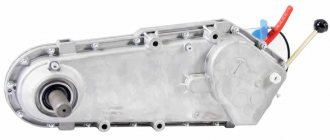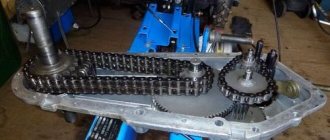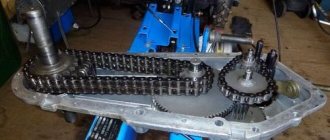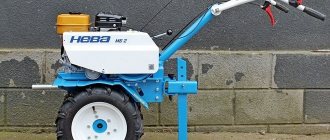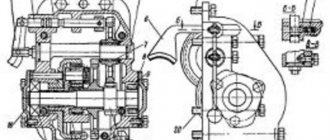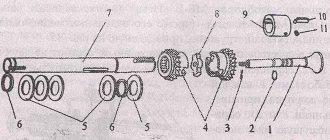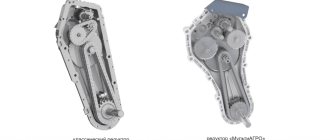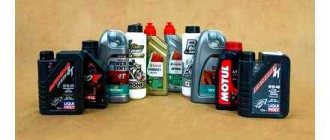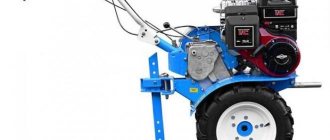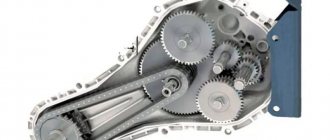The Italian company Parma was created back in 1980. Under this brand, various farm equipment was produced, including walk-behind tractors, chain and circular saws, and other power tools. Due to high competition in the gardening equipment market, by the mid-90s the company was on the verge of bankruptcy. In 1997, the brand was sold: it came into the possession of a Russian company. Today, the main production facilities for components for walk-behind tractors and other equipment are located in China, at the Parma Power plant. Large-unit assembly is carried out at Russian and Chinese enterprises.
It should also be mentioned that Parma walk-behind tractors are equipped not only with Chinese, but also with Japanese components. In particular, some models have carburetors from Walbro, as well as engines manufactured under license from Honda Corporation.
Parma walk-behind tractors, like other equipment from the manufacturer, are certified in many European countries, including Ukraine and Russia. The brand's products meet all modern quality and safety requirements. The company pursues a balanced pricing policy: the cost of Parma walk-behind tractors ranges from 300 to $510.
Distinctive features of Parma walk-behind tractors
- The consumer can choose a unit with either a gasoline or diesel engine;
- The tools are equipped with a simple and reliable control system;
- The manufacturer’s equipment is designed to work with different soils and in different climatic conditions;
- Walk-behind tractors are adapted for use with various attachments: mowers, potato planters/diggers, milling cutters, plows, snow blowers, and other tools;
- The company provides high-quality warranty and post-warranty service;
Operation and maintenance of Neva-MB-2
To ensure that there are no malfunctions in the operation of the MB-1 and MB-2K mini tractors, you should follow all recommendations for the operation and maintenance of equipment specified in the instructions:
- The engine needs to be tuned. To do this, you will need to study the structure of this part, select the correct oil fluid for servicing the engine, spark plugs and fuel.
- Set up and adjust the gearbox and transmission. The serviceability of these parts must be checked every day before starting work.
- Install additional equipment only in accordance with the user manual.
- Follow the maintenance schedule (points 1 and 2) and seasonal maintenance (before the summer and winter periods).
About the configuration of the Parma walk-behind tractor MK-01-7.0
The delivery set includes an adapter for attaching mounted and trailed equipment - rotary or segment mowers, snow removal attachments, etc. This is a “Cascade / Neva” type coupling device (similar to those used in these popular brands of walk-behind tractors and cultivators). Also, a three-handle pulley is used to connect the mower and other additional equipment. Parma MB (MK)-01-7.0 walk-behind tractors are equipped with high-quality, durable Russian-made belts.
Also included as standard are heavy-duty milling cutters manufactured with hardened cutting surfaces and a 30mm diameter seat.
Changing the engine oil
The procedure for changing the engine oil:
- Place the vehicle on a level surface.
- Allow the engine to cool. This will help you measure the oil level.
- Clean the area around the dipstick plug, which is located on the left side of the engine.
- Fill the oil liquid to the maximum mark (recommended oil - TAD-17I, TAP-15V).
- To determine the level to which the fuel liquid has been filled, you need to use dipsticks. To do this, you will need to take a dry dipstick plug and insert it into the oil fill connector. From the remaining trace you can determine to what level the liquid was filled.
- If there is an excess of oil fluid, a leak begins, which can lead to malfunctions in the operation of the walk-behind tractor.
Maximum speed of walk-behind tractor
Many owners wonder: what is the highest speed possible on a walk-behind tractor? The answer depends on many nuances, mainly on the walk-behind tractor model. It is also important to consider that the operating speed is lower (2-4 km/h) than the speed of the walk-behind tractor when transporting goods. If the operating speed is increased, some types of work will be more difficult to complete, since controlling the walk-behind tractor will become very difficult for the operator. If the walk-behind tractor is used as a vehicle, its speed can reach 30 km/h.
First launch and run-in
Running in is necessary so that all parts can get used. Having worked for a short period of time at a minimum load level, the walk-behind tractor will be less likely to fail in the future.
- The break-in process must be no less than the time specified in the operating instructions.
- Loads should be small. For example, if the technical specifications indicate that the maximum tillage depth is 50 cm, then during the first start-up and run-in it is recommended to limit it to 30 cm.
- Before running in, it is necessary to fill the engine with oil.
- Fill the fuel tank.
- Start the unit at medium speed.
- Within 60 minutes it is necessary to check the operation of all gears.
- Perform a small amount of work on cultivating, plowing the soil and transporting small loads.
Attempts to solve the problem
The first thought that came to mind was that the clutch roller ( 1 ) needs to be adjusted; apparently, even when released, it does not loosen the belt enough. I simply disconnected the roller from the cable that comes from the clutch handle, the roller dropped as much as possible, but no miracle happened, the belt continued to cling to the engine pulley and transmit rotation.
Well, now everything is clear, there’s something wrong with the belt (it’s swollen, it’s become too rough, I don’t know...). 4 years of work apparently finished it off, we order a new one and that’s it, the problem is solved, well, what else could not work in such a simple scheme.
As it turned out, buying a belt specifically for this model is not so easy, everyone has it to order and, in principle, costs money.
When the new belt arrived and was installed in its place, it didn’t change the situation at all, everything was exactly the same as with the old belt, the gearbox shaft was spinning like crazy, you could only stop it with your foot.
Next, the following manipulations were carried out:
- the pulleys of the engine shaft and gearbox shaft were degreased and cleaned
- Checked engine installation on frame and engine alignment
- installing the original pulley on the engine (we use a non-original 3-groove pulley)
- finally lubricating the pulleys and belt (then I had to wash it for a long time)
The result is ZERO , the problem did not go away, there was no solution either in the instructions or on the Internet...
Basic faults
The reason for repairing the Neva MB-2 walk-behind tractor may be:
- incorrectly adjusted valve belt;
- gear oil seals;
- incorrect setting of the carburetor system;
- ignition not set;
- faults with spark plugs.
Belt adjustment and dimensions
The V-belt on the walk-behind tractor helps the unit move forward and backward. When the drive belt slips, the equipment stops functioning correctly.
In order to determine the size of this part, it is necessary to measure the gap from the pulley to the rollers. Recommended belt parameters: width - 0.85 cm, height - 0.6 cm.
To tighten the belt, you must do the following:
- Remove the casing.
- Loosen the tension screw of the standard belt part.
- Remove all the screws that hold the bracket to the walk-behind tractor body.
- Remove the old part and adjust the pulleys.
- Wipe the space between the parts and blow out the rods.
- Install a new belt, one end of which must be connected to the shaft part, and the other to the pulley.
Replacement of gearbox seals
The cause of gearbox failure may be improperly functioning oil seals. Therefore, repairing the Neva walk-behind tractor gearbox may include the following actions:
- Removing cutters from the shaft part.
- Cleaning the shaft and cover from dirt and oil residues. Remove all screws from the cover and wash them.
- Replace the old part with a new one and wipe the entire mechanism dry.
- Return the cover to its place and secure it with bolts.
In some cases it is necessary to disassemble the gearbox:
- Remove the head from the gear shift knob.
- Remove the bushing and spring from the shaft part.
- Remove all screws and tie bolts.
- Using a thin screwdriver or knife, remove the right half of this part.
- Removed parts must be washed, and faulty parts must be replaced.
- Reassembling the gearbox is carried out in the reverse order.
Before adjusting the carburetor, it is necessary to adjust the centrifugal regulator according to the user instructions.
- Tighten the low and full throttle bolts to maximum, and then unscrew them 1.5 turns.
- Install the throttle-type damper so that a gap of the corresponding parameters appears between the base and the air duct.
- Try to start the engine. If it starts, you need to wait until it warms up.
- Set the control knob to minimum speed.
- Set the idle speed to minimum using the throttle valve screw.
- Set the speed to maximum using the idle screw.
- Repeat the last 2 steps until the motor starts to function smoothly.
- Set the control stick to gas.
How to increase the speed of a walk-behind tractor
You can increase the speed of the walk-behind tractor in two ways:
- installation of large wheels;
- replacing a gear pair.
Let's first look at how changing wheels helps increase the speed of a motor cultivator. The standard wheel size of almost all mini-unit models is 57 cm. When replacing, you can install tires 1.2 times larger in diameter. Typically, wheels of 70.4 cm are used. Despite the small difference, the speed of the walk-behind tractor increases noticeably. If the arches into which the tires are inserted allow you to insert wheels with a larger diameter, then you can try adding centimeters.
When using a walk-behind tractor for cultivating land, lugs are used. These are wheels with iron plates that freely grip the ground or snow. They can be purchased in specialized stores, or you can make them yourself. Their size also affects the speed of movement of the unit.
Let's look at how to increase the speed on a walk-behind tractor using the second method. Like any equipment, the cultivator has several speeds, which are controlled using gears. Typically, cultivators move at a speed of 2 to 15 km/h, with the large gear having 61 teeth and the small gear having 12. To increase the speed, the gear pairs of the gearbox are replaced. We increase the number of teeth, thus achieving the maximum speed of the walk-behind tractor.
It is recommended that replacement be carried out by professionals and preferably in specialized centers, since parts machined with minimal error will affect the operation of the motor. It is important not only to replace the gear, but also to select the correct pulley.
Motoblock Neva-2 about the gearbox | Fermer.Ru - Farmer.Ru - Chief.
Apr 8, 2010 — My Neva-2 walk-behind tractor with a domestic engine DM-1k (6.2 hp. I have a Favorite walk-behind tractor and I have the same problem. In second gear, the netralka drops and the second speed itself switches on and the ringing starts again.
You shouldn’t start repairing the gearbox on a walk-behind tractor yourself if the operation of the unit and its design are a complete secret to a new user. Since the gearbox is a rather complex unit, you should not proceed to repairing it yourself immediately after detecting breakdowns. It will be better if professionals handle the repair of the gearbox.
If an oil leak is detected from the gearbox, it means that the bearing seals were installed incorrectly or were worn out. They may not be properly tightened on the lids. Damaged gaskets may appear underneath them. If the air valve (breather) is clogged, it is necessary to clean it and bring the oil level to normal. Oil leaks can be eliminated by replacing or correctly installing oil seals or gaskets. Tightening the cover bolts will also help solve the problem.
What owners say about Parma MK-01-7.0 walk-behind tractors
As one of the main advantages of this technology, almost all owners note its affordable price for the average villager. Parma walk-behind tractors work much better when using auxiliary equipment for plowing virgin soil and dense soils, which increases traction with the ground with lugs. Standard lug sizes are 450/160 mm. The walk-behind tractor adequately copes with work with a single-furrow plow of a classic fixed or complicated reversible design; a double-hulled plow will no longer cope, unless on light soils. The constant plowing depth is regulated by the coulter, which is equipped with each Parma walk-behind tractor.
Most owners use walk-behind tractors of this model to cultivate potato fields and vegetable gardens. In this regard, common additional equipment for it are a potato digger and a potato planter. In most cases, an ordinary stationary potato digger of the “Mole” type is used. Potato planters with which this walk-behind tractor works successfully are KS-1, KSC-1, KSM-2.
It is important to run in the walk-behind tractor in medium load mode. Intensive engine operation during the initial break-in phase should be avoided. These walk-behind tractors are quite unpretentious to the complexities of the terrain and soils of various structures. In addition to the affordable price, Parma walk-behind tractors have other characteristic advantages. This is its maneuverability, lightness and compactness: Parma can work in any cramped conditions, in winding areas, in greenhouses and greenhouses.
This is a high degree of versatility and multifunctionality: the walk-behind tractor can be equipped with attachments and trailed equipment from many other brands of similar units of domestic and foreign production. If desired and necessary, you can install a new engine, more powerful, since the frame design allows for this. This is reliability: all parts and fastenings of the product are characterized by a significant margin of safety. The walk-behind tractor can withstand shocks and falls, its engine can run on any gasoline and is not picky about its quality. This is ease of maintenance: adding or replacing engine and transmission oil, replacing gaskets and tightening loose connections.
The dimensions are compact: the Parma MB(MK)-01-7.0 walk-behind tractor is convenient to store in a small shed or garage, or even on a balcony/loggia. It can easily fit into the trunk of a car, and for transportation and movement, the muscular efforts of one adult man of God knows how much strength will be enough.
Types of violations in the checkpoint and ways to correct them
If the automatic transmission mechanism has stopped functioning normally, the following types of problems may occur:
- Violation of the kinematic connection inside the gearbox.
- Spontaneous gear shifting or lack of locking.
- Oil leak on the shift shaft.
- Dysfunction of the axle decoupling mechanism.
- No gear shift.
- Gearbox jamming.
If the kinematic connection inside the gearbox is broken or the sprocket in the block breaks, it is necessary to disassemble the gearbox to replace the problematic sprocket. The cause of an oil leak on the shift shaft may be excess oil in the gearbox, so you need to check the oil level. If the welding connection of the gear breaks, disassemble the gearbox and replace the block shaft. After draining the excess oil, you should check the degree of wear of the working edge of the cuff on the shift shaft, disassemble the gearbox and replace the part.
The reason for the lack of gear locking or their spontaneous shutdown is a violation of the adjustment of the gear shift mechanism. When making repairs, you should loosen the screws securing the switching mechanism board.
After this, engage first gear and tighten the screws securing the board. For example, having made a mini tractor with your own hands, it is imperative to ensure that the drive is adjusted correctly by changing the tension of the axle axle separation control cable. To correct the breakdown of any element of the axle decoupling drive inside the gearbox, you should disassemble the gearbox and replace the broken parts.
If a broken spring or worn shift mechanism board retainers are found, the damaged parts should be replaced by adjusting the gear shift. If it is missing, the shift crayon may be destroyed or the threaded piece of the shift knob may be cut off. After disassembling the gearbox, it will be necessary to replace the defective parts. If there is no gear shift, you should disassemble the gearbox and replace the worn gear shift fork. If the cause of the gearbox jamming is a broken chain, then it should be disassembled and the chain replaced.
If the operation of the gearbox is accompanied by increased noise in the gearbox, then the reason for this may be a lack of oil in the gearbox device or a discrepancy between the quality of the lubricant and the required parameters. It is necessary to choose oils of the appropriate brand; they must have a certain purity. If there are any problems, you will need to change the oil or add it to the gearbox.
The occurrence of noise in the transmission units of a walk-behind tractor can be caused by loose fasteners, so it is necessary to inspect the fasteners, tightening them properly.
The cause of frequent noise is wear of the gears and bearings. This may lead to more serious damage to the walk-behind tractor's gearbox. It is not difficult to avoid their occurrence if you carry out timely inspection and repair of the walk-behind tractor. It consists of the usual replacement of worn components and parts.
If the transmission units of a walk-behind tractor heat up, the following are the main causes of this malfunction:
- Lack of transmission oil in the crankcases.
- Worn bearings.
- Oil condition does not meet the required parameters.
There can be two reasons for correcting deficiencies:
- bearings replaced;
- adding or replacing oil.
In order for a gearbox or homemade gearbox to last longer, it is necessary to periodically check the oil level in them, fearing a sudden change in load.
Signs of disturbances associated with difficulties in switching speeds, spontaneous shutdown, disruption of the process of turning on the unit, arise for the following reasons:
- Worn parts.
- Abrasion of shaft splines.
- Incorrect clutch adjustment.
Rolling (wear) of the ends of the engaged gears causes two problems, leading to self-shutdown or incomplete inclusion of speeds.
How to reduce the speed of a walk-behind tractor
To solve certain problems (plowing virgin lands and heavy soils), some models of walk-behind tractors may be too fast, in which case it is necessary to reduce the speed.
Without resorting to changes to the equipment itself, you can use the reduction gear, which is present on many models. This option allows you to reduce speed without reducing power, allowing you to work the soil more thoroughly.
To reduce speed, you can reduce the diameter of the wheels or replace the gear pair in the wheel reducer by changing the gears. Typically, gears of different sizes are installed, with a number of teeth of 61 and 12, in order to reduce the speed, it is necessary to replace them in such a way that the number of teeth on the larger sprocket increases.
Can't start the walk-behind tractor
The real repair of the walk-behind tractor with your own hands begins. The clutch lever is released and the gear is disengaged. The diagnostic sequence is as follows.
Checking the engine progress with the starter cable. Free cranking is a signal of a breakdown in the mechanical part of the engine. Uncharacteristic sounds and grinding noises will confirm that the problem is in the connecting rod, camshaft, or valve group. It is advisable to carry out repairs to the walk-behind tractor engine at a service center. If you carry the walk-behind tractor on its side, repeat the start without a spark plug - the cause could be crankcase oil getting into the combustion chamber.
Compact analogue of a mini-tractor
The unit, in addition to agricultural operations of plowing, cultivating, cutting furrows, digging root crops, hilling, and watering, copes with mowing, snow removal, sweeping, and transportation.
Advantages of the Neva MB-2 walk-behind tractor:
- In the domestic market
- more than 30 years. - Subaru EX21 engine
– 5.5 kW. - Tillage depth
– 0.3 m. - Frontal coverage
– 0.85–1.2 m.
Practice shows that half of the cases of failures and breakdowns are associated not with natural wear, but with improper tuning, adjustment, running-in and maintenance of the engine and gearbox.
Construction of the Neva MB-2 walk-behind tractor
Attempts to solve the problem
The first thought that came to mind was that the clutch roller ( 1 ) needs to be adjusted; apparently, even when released, it does not loosen the belt enough. I simply disconnected the roller from the cable that comes from the clutch handle, the roller dropped as much as possible, but no miracle happened, the belt continued to cling to the engine pulley and transmit rotation.
Well, now everything is clear, there’s something wrong with the belt (it’s swollen, it’s become too rough, I don’t know...). 4 years of work apparently finished it off, we order a new one and that’s it, the problem is solved, well, what else could not work in such a simple scheme.
As it turned out, buying a belt specifically for this model is not so easy, everyone has it to order and, in principle, costs money.
When the new belt arrived and was installed in its place, it didn’t change the situation at all, everything was exactly the same as with the old belt, the gearbox shaft was spinning like crazy, you could only stop it with your foot.
Next, the following manipulations were carried out:
- the pulleys of the engine shaft and gearbox shaft were degreased and cleaned
- Checked engine installation on frame and engine alignment
- installing the original pulley on the engine (we use a non-original 3-groove pulley)
- finally lubricating the pulleys and belt (then I had to wash it for a long time)
The result is ZERO , the problem did not go away, there was no solution either in the instructions or on the Internet...
